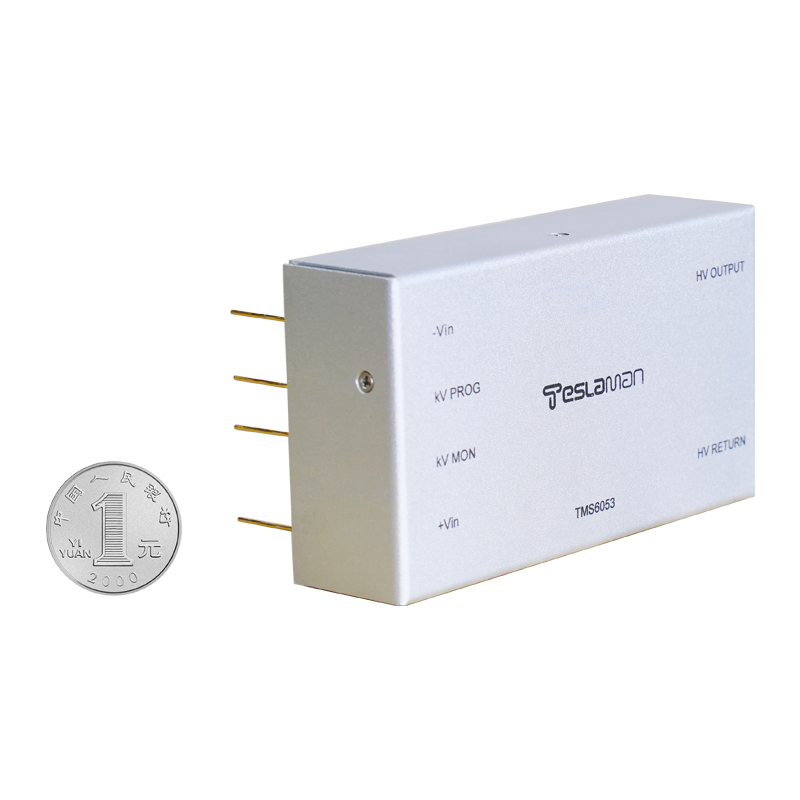Application of High-voltage Pulse Power Supply in NanoKnife Device
Abstract
This article mainly introduces the application of high-voltage pulse power supply in the NanoKnife device. Firstly, a brief overview of the NanoKnife device is given; then, the role and importance of the high-voltage pulse power supply in the NanoKnife device are analyzed; next, the design, parameter selection, and control strategy of the high-voltage pulse power supply are elaborated in detail; finally, the development trend and application prospects of the high-voltage pulse power supply in the NanoKnife device are summarized.
1. Introduction to NanoKnife device
NanoKnife is a new non-thermal ablation technology that uses high-voltage pulsed electric fields (HVEF) to stimulate cells non-thermally, leading to biological effects such as cell membrane rupture, protein denaturation within the cell, and DNA damage, thereby achieving the purpose of treating tumors. NanoKnife has the advantages of small trauma, good curative effect, and few side effects, and has become a research hotspot in the field of tumor treatment.
2. Role and importance of high-voltage pulse power supply
The high-voltage pulse power supply is a core component of the NanoKnife device, its function is to provide high voltage, narrow pulse width, and high peak value pulse current for the NanoKnife. The importance of the high-voltage pulse power supply in the NanoKnife device is mainly reflected in the following aspects:
(1) Achieving non-thermal ablation: The high-voltage pulse electric field generated by the high-voltage pulse power supply can form irreversible nano-scale holes on the cell membrane, resulting in cell death. This non-thermal ablation method can avoid tissue carbonization and thermal damage caused by traditional thermal ablation methods, improving the therapeutic effect.
(2) Accurately controlling the ablation range: The parameters of the high-voltage pulse power supply (such as voltage, pulse width, frequency, etc.) can directly affect the therapeutic effect of the NanoKnife. By precisely controlling these parameters, the ablation range can be accurately controlled, thereby reducing the damage to the surrounding normal tissues.
(3) Improving equipment safety: The design and control strategy of the high-voltage pulse power supply are directly related to the safety of the NanoKnife device. Through reasonable design of the power supply and precise control of output parameters, the failure rate of the equipment can be effectively reduced, improving the safety of the equipment.
3. Design, parameter selection, and control strategy of high-voltage pulse power supply
3.1 Design of high-voltage pulse power supply
The design of the high-voltage pulse power supply mainly includes the selection of power supply topology structure, the selection of components, and the design of circuit boards. In the design process, it is necessary to fully consider factors such as stability, reliability, and efficiency of the power supply. Currently, commonly used power supply topology structures include bridge converters, push-pull converters, single-ended flyback converters, etc. In practical applications, appropriate topology structures should be selected according to specific needs.
3.2 Parameter selection of high-voltage pulse power supply
The main parameters of the high-voltage pulse power supply include output voltage, output pulse width, pulse repetition frequency, etc. The selection of these parameters directly affects the therapeutic effect of the NanoKnife and the safety of the equipment.
(1) Output voltage: Output voltage is one of the key parameters of the NanoKnife device. Excessively high voltage may cause excessive cell damage or even electroporation; while too low voltage may not achieve the desired therapeutic effect. Therefore, appropriate output voltage should be selected based on actual treatment needs and cell characteristics.
(2) Output pulse width: Output pulse width is also an important parameter of the NanoKnife device. A wider pulse width may cause excessive holes on the cell membrane, increasing the risk of tissue damage; while a narrower pulse width may not effectively kill tumor cells. Therefore, appropriate output pulse width should be selected based on actual treatment needs and cell characteristics.
(3) Pulse repetition frequency: Pulse repetition frequency refers to the number of pulses output per unit time. Higher pulse repetition frequency can improve treatment efficiency, but at the same time, it will increase the workload of the equipment, which may lead to overheating of the equipment. Therefore, appropriate pulse repetition frequency should be selected based on actual treatment needs and equipment performance.
3.3 Control strategy of high-voltage pulse power supply
The control strategy of the high-voltage pulse power supply mainly includes output voltage control, output pulse width control, pulse repetition frequency control, etc. The realization of these control strategies can be achieved through digital signal processors (DSP), field-programmable gate arrays (FPGA), and other controllers. In practical applications, appropriate control strategies should be selected according to specific needs.
4. Development trend and application prospects of high-voltage pulse power supply
With the continuous development and application of NanoKnife technology, high-voltage pulse power supplies are also constantly improving and innovating. In the future, the development trend and application prospects of high-voltage pulse power supplies will be mainly reflected in the following aspects:
(1) Higher voltage, shorter pulse width: In order to improve the therapeutic effect of NanoKnife, future high-voltage pulse power supplies will develop towards higher voltage and shorter pulse width.
(2) Intelligent control: With the development of artificial intelligence technology, future high-voltage pulse power supplies will realize intelligent control, which can automatically adjust output parameters according to different treatment needs and cell characteristics, improving the therapeutic effect.
(3) Multi-mode output: Future high-voltage pulse power supplies will have multiple output modes, which can choose appropriate output modes according to different treatment needs.
In conclusion, the high-voltage pulse power supply plays an important role in the NanoKnife device, and its design and control strategy directly affect the therapeutic effect and safety of the NanoKnife. With the continuous development and application of NanoKnife technology, high-voltage pulse power supplies will also continue to improve and innovate, providing more efficient and safer technical support for tumor treatment.




















